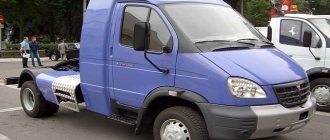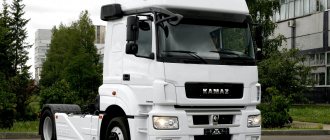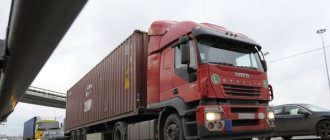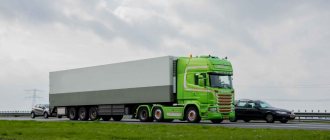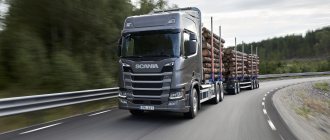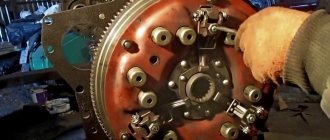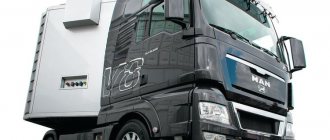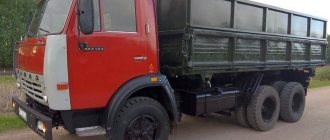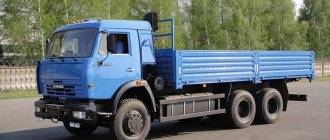- home
- Articles
- How to choose the right cargo trailer?
Modern logistics is impossible without cargo transportation in large volumes and over long distances. Considering the variety of cargo trailers , a completely justified question may arise: which trailer to choose for transportation?
A properly selected cargo trailer not only ensures reliable transportation of various cargoes in the required volume, but also guarantees the safety of the vehicle. Since an incorrectly selected trailer can cause imbalance, instability of the vehicle while driving and damage to the cargo being transported. Also, an incorrectly selected trailer can complicate the truck’s handling and cause accidents. Therefore, the choice of rolling stock must be approached with precise knowledge of the nuances and features of trailers.
A semi-trailer is a natural extension of a vehicle or tractor that allows the total load to be distributed between the tractor and its own chassis. Such trailers are the most common, as they combine maneuverability, convenience, spaciousness and safety for cargo.
What is a trailer
A trailer is a vehicle for transporting goods that resembles a cart and takes the entire weight of the load upon itself.
It has a drawbar or drawbar with a lasso (loop) made of durable material. The tractor has a special device for engaging the loop - a towbar or hook. With its help, the trailer clings to the car, which is its traction mechanism. Trailers differ in the number of axles, body type, load capacity, and scope of application. They are often used in conjunction with passenger cars for transporting household items, for example, to the dacha or for transporting equipment - boats, boats, ATVs. There are also trailers for use with trucks and tractors.
In addition, some types of equipment, for example, lifting cranes, can be made in the form of trailers.
It is important to know!
Moving a car with a trailer changes its behavior on the road. Therefore, traffic regulations imply a separate category “E” for drivers using a trailer even with a personal car.
What to consider when choosing a semi-trailer?
We will consider the main types of semi-trailers, both in terms of technical characteristics and the possibility of transporting various types of goods.
Curtain semi-trailer
Semi-trailers covered with PVC fabric are in demand due to their versatility. They are suitable for transporting almost any type of cargo - packaged piece goods or indivisible goods that do not require special storage and transportation conditions. The awning protects the cargo from environmental influences, such as rain or snow, and may also have specific characteristics. So, when transporting fire-hazardous goods, you need to use fire-resistant fabric.
A curtainsider semi-trailer for a truck can be equipped with a metal roof, sometimes with a folding structure, which is convenient for loading with a crane. The frame can be solid or bolted together - some believe that the bolts quickly become loose on less-than-ideal domestic roads, reducing the strength of the structure.
It is better to choose a tent semi-trailer with a rigid front wall to avoid the load shifting towards the driver's cabin during sudden braking. Also, many drivers believe that disc brakes will last longer than drum brakes when used on Russian roads.
The disadvantages of a tent semi-trailer include a low level of cargo security - an attacker can cut the fabric and gain access to the goods while parked. The process of stretching the awning is quite labor-intensive, so difficulties may arise during loading and unloading - however, this problem is solved by an improved awning semi-trailer with a curtain design.
- The curtain side semi-trailer belongs to the category of tent semi-trailers. A distinctive feature is the opening mechanism - the awning simply moves to the side, folding like an accordion. This allows goods to be loaded and unloaded from any side. The roof of the curtainsider semi-trailer opens according to the same principle, so unloading is possible using lifting equipment. Moreover, the upper part opens independently of the side ones.
- The curtain-side design of a tent semi-trailer, as the name suggests, has special sides. Many consider it more reliable, eliminating the risk of the load falling out during sharp turns. However, there is an opinion that this will not happen if the goods are properly secured, so it is recommended to abandon the installation of sides, which will reduce the weight of the semi-trailer, the difficulty of closing the awning, as well as the cost of the structure. Fixed and non-folding sides can make it difficult to load goods from the side.
If you plan to carry out international transportation, you need to think about purchasing a semi-trailer that meets TIR standards [1]. In order to avoid cargo inspections at each of the borders crossed, the semi-trailer is sealed and sealed in a special way. In this case, access to the cargo without visible violation of the integrity of seals must be closed. For international transport, semi-trailers of the flatbed awning type with a supporting frame are often used. TIR standards require additional fixation points for the awning, the fabric of which should not have lateral separation, as well as a floor design that does not allow penetration. Each semi-trailer that meets the requirements is marked with a large TIR lettering.
The average price for tent semi-trailers is 1.5–2.5 million rubles [2]. Economy class brands include Tonar and Kassbohrer, mid-price brands include Wielton and Zaslaw, and luxury class brands include Schmitz and Krone.
Flatbed semi-trailer
Transportation of goods that are not sensitive to weather conditions and the effects of road dust and pollution is carried out using open structures. Flatbed semi-trailers are often used to transport construction goods - bricks, metal, fittings, tiles, etc. Removable or folding sides make loading and unloading easier. Side models may have a rigid front wall.
The advantage of flatbed semi-trailers is their low dead weight, which allows them to transport up to 35 tons of cargo [3].
The internal part is equipped with fastening mechanisms - hooks and brackets. If you plan to transport cargo containers using a flatbed semi-trailer, you should choose a model with special fittings to secure them. Note: When changing the specialization of your activity, it is not at all necessary to buy a new semi-trailer - in some cases it can be improved.
For example, to transport sand and other bulk goods, owners of conventional flatbed semi-trailers increase the height of the sides. For example: “Tonar 97461-0000030-60/61” has a load capacity of 27,750 kg, a three-axle chassis, a high-strength frame, 8 sides 63 cm high, drum brakes with an emergency system [4].
The price of a flatbed semi-trailer for a truck depends on its brand and load capacity, but on average ranges from 1.1 to 2.4 million rubles for a new model [5]. The economy segment is represented by models from the MAZ and Tonar brands; in the mid-price category you can buy Grunwald, and the more expensive ones include Krone flatbed semi-trailers.
What is a semi-trailer
A semi-trailer is more like a frame wheelbarrow or cart. It is designed for transporting various cargoes, mainly over long distances. Like a wheelbarrow, a semi-trailer transfers part of the load to a traction mechanism, which is usually a truck. However, it is connected through a special fifth-wheel coupling device (SSU or saddle) located on the truck frame. Therefore, such a car was called a truck tractor.
Due to its design, the semi-trailer can only stand separately from the tractor with the help of extendable support legs. They take on part of the weight of the cargo and the trailer itself instead of the tractor.
The most popular semi-trailer is a curtain-type one, in particular a curtain-type one. This type of vehicle is popularly called a truck. Also, a trawl for transporting equipment and a panel carrier for transporting reinforced concrete products for panel housing construction are in wide demand.
What is more profitable to transport goods in a trailer or semi-trailer?
Cargo transportation equipment allows you to transport a large volume of cargo in one trip, which significantly reduces costs and increases profits. When choosing, determine the carrying capacity of the vehicle, the volume of planned transportation, the type and weight of the cargo.
For moving large volumes of cargo over long distances, semi-trailers are more profitable.
The selected semi-trailer must be suitable for the truck or tractor in terms of mounting height, suspension, and electrical equipment. A refrigerator is suitable for transporting food and medicine. If household appliances or other industrial goods are packed in boxes, you can give preference to a semi-trailer with curtains. Equipment covered with an awning is suitable for the same purposes.
Flatbed semi-trailers are used for transporting building materials - bricks, reinforced concrete slabs, rolled metal.
Dump semi-trailer is often used in the construction industry and agriculture to deliver sand, boards, and grain to their destination.
Advantages of semi-trailers:
- safety;
- efficiency;
- fast acceleration;
- high load capacity;
- a wide range of products, differing in technical characteristics.
The disadvantages of semi-trailers include low cross-country ability on dirt roads and the complexity of repair work.
Advantages of truck trailers:
- excellent off-road performance;
- suitable for any vehicle equipped with a towing device;
- easy coupling.
In terms of carrying capacity and maneuverability, trailers are inferior.
Transportation on highways using semi-trailers is economically beneficial when delivering goods over 10 tons. It is advisable to transport lighter loads using trailers.
Main differences
If the principle of operation of a trailer resembles a cart, and a semi-trailer resembles a wheelbarrow, this is the main difference between them.
As a result of this design feature, transporting goods using a semi-trailer requires special equipment or greater efforts to re-equip the vehicle than when using a trailer. It is the method of attachment to the traction mechanism that distinguishes these two types of trailed equipment and determines the versatility of the equipment. When installing a fifth wheel coupling device on a car, its functionality is limited only to use as a traction device for semi-trailers. Whereas installing a tow bar expands the capabilities of the car without limiting the original functions.
The second important point is the load on the road surface. The mass of the trailer and the weight of the cargo are transferred to the road through the full pressure of its wheels. While the semi-trailer transfers part of the load to the tractor. This distributes the weight between the axles of the semi-trailer and the tractor, which increases the potential load-carrying capacity of the equipment.
The type of attachment to the traction mechanism also determines the behavior of the vehicle on the road. The trailer is connected to the vehicle via a tow bar. This type of hitch is difficult to maneuver and requires more attention from the driver. Whereas a semi-trailer is like a continuation of the car itself. Driving a road train is also more difficult than driving a car, but easier than driving a car with a trailer.
Recommendations on technical components
When the question arises of how to choose a semi-trailer for a tractor, first of all you should think not only about a suitable design, but also about the parameters. Technical characteristics are a key selection criterion. It will determine how well the road train will cope with its task.
When choosing equipment, pay special attention to the frame and chassis. The first is responsible for the rigidity of the semi-trailer, its ability to withstand dynamic and static loads. The chassis affects the load capacity. Everything here is directly proportional - the more, the better. There are the most unusual multifunctional tractor trailers on the market. Sellers focus on technical characteristics. Meanwhile, you need to pay attention to the brand. A “young” and inexperienced manufacturer is unlikely to be able to provide a truly reliable product, no matter how multifunctional it may be.
There are different types of semi-trailers for truck tractors. Regardless of what choice you make, be sure to read the technical and other documentation. Certificates, guarantees, information about parameters - everything should be included.
Trailed vehicles for passenger vehicles
Basically, trailers are used for passenger vehicles.
They transport furniture, building materials, cargo and equipment for the dacha, equipment - ATVs, jet skis, boats, yachts, motor vehicles and much more. There are also special trailers - motor homes, small lifting mechanisms, compressors, etc. There is a conditional division into categories.
- Flatbed or universal trailers. They are open and tented. Suitable for small-sized items, building materials, commercial goods, country property.
- Frame units. They carry boats, buggies, ATVs and other specific cargo. They are very different from other devices and are mainly used only for their intended purpose.
- Specialized trailers. Often intended for commercial use. For example, a tow truck, a platform with a generator, or a crane.
- Homes on wheels. A kind of carriage. An excellent choice for travel lovers. A movable trailer is on the road and a non-movable trailer is parked. Usually there are places inside for sleeping, relaxing and cooking.
They also differ in the material of manufacture, configuration, number of axles, load capacity, and type of coupling.
Note!
The trailer must be equipped with lighting devices. Install reflectors and lighting at 12 or 24 Volts. Types of trailers and semi-trailers for trucks
Russian manufacturers of trailers for trucks and heavy-duty vehicles
Domestic enterprises produce trailed equipment of various types. These are tipper, awning, flatbed trailers and semi-trailers, verticals, container ships, trawls and other special trailers.
The following manufacturers' equipment is represented on the Russian automotive market:
- CJSC Cheboksary Enterprise Sespel produces general purpose semi-trailers. Imported components are purchased for assembly. The technology differs from Western technology only in price.
- The machine-building industry uses lightweight steel in the production of trailers. Thanks to new technologies, the weight of the units has been significantly reduced. Semi-trailers are equipped with a pressure gauge and InstaChain anti-skid system.
- Neftekamsk Automobile Plant LLC from the Republic of Bashkortostan produces flatbed scows, tanks, and general purpose trailers. The company's designers created a three-axle semi-trailer dump truck PPS-K-33 with a load capacity of 33,000 kg and lowering the body in 45 seconds. The floor and walls are made of Russian steel, the sides are made of imported steel.
Types of trailers and semi-trailers for trucks
Trailers are classified by type, cargo dimensions and carrying capacity, which ranges from 1.5 to 20 tons. The main types of truck trailers are:
- side and awning;
- booth;
- dump;
- tank for transporting liquid cargo.
A flatbed trailer with an awning and a booth are very similar, however, they are designed for different types of cargo. In the first case, the awning only protects cargo from atmospheric influences, while the second is thermally insulating, which helps prevent sudden temperature changes.
A dump trailer is often used for transporting bulk materials, grain, and feed. It can have both rear and side unloading types.
The classification of semi-trailers is similar to that of trailed ones. It is based on the tasks that trailed equipment solves. The most common semi-trailers are:
- Tent semi-trailer.
Universal in purpose. It can accommodate both packaged, piece and whole cargo. The awning protects from snow and rain. - Curtain semi-trailer .
Belongs to the previous category, but differs in the way it opens. The awning moves to the side, folding into a corrugation. It is convenient to load and unload goods from the right and left. The roof also swings open like an accordion, which allows the use of lifting mechanisms. There are portal doors installed behind them, through which loading and unloading operations are also carried out. - Curtain side semi-trailer.
The same as a curtain, only with the addition of special sides. Some users find it the most reliable, although non-hinged sides make loading and unloading difficult. - Flatbed semi-trailer.
There are many products that are not afraid of the vicissitudes of the weather: bricks, reinforced concrete products, corrugated sheets, metal sheets, pipes, etc. The sides can be removed or folded down. - Isothermal semi-trailer and refrigerator.
Used for transporting goods that require microclimate regulation. Frozen semi-finished products, vegetables, fruits, flowers, medicines. Along the route, such trucks are able to maintain the required temperature conditions like a thermos due to heat-proof walls and doors. They differ in that the refrigerator has a refrigeration system installed. - Dump truck.
This vehicle is most often used in construction or agriculture. Sand, crushed stone, gravel, earth, coal are transported. They differ in the method of unloading. - Car transporter.
Depending on the configuration, the road transport train can accommodate 8 cars, 3 minibuses and 6 SUVs. The design is possible tent. - Tank.
These are a fuel tanker, a cement tanker, a milk tanker, an oil tanker, and a water tanker. The internal coating of the tank depends on the chemical properties of the product. - Heavy truck or trawl.
Designed for transporting machinery and equipment. It transports drilling and oil rigs, excavators, bulldozers, and other construction equipment. - Semi-trailer van.
Outwardly it looks like a unit with an awning, but the walls are hard. Rectangular in shape and with a gate at the back.
In conclusion, it is worth noting that more than 60% of all transportation in the world is carried out by road trains using semi-trailers. On the roads of Russia and the CIS countries you can see trailed units of domestic and imported production. Manufacturers offer equipment for almost any need.
Trailer Specifications
When choosing a suitable semi-trailer for cargo transportation, it is necessary to evaluate its main parts, the type and quality of which can become a decisive factor in choosing the optimal model.
Semi-trailer frame
One of the key elements of a trailer is its frame or a kind of spine. It consists of two longitudinal spars of different heights, which are made in the form of an I-beam and transverse beams or traverses, surrounded by an external frame around the perimeter. An extremely important parameter of the frame is its elasticity. It can be bolted or completely welded. Elasticity and frame thickness are different concepts. Therefore, a thick frame is not always the best option. Expensive and high-quality steel is thinner than standard steel, so a frame made from this material is lighter and thinner, while budget metal will be softer. Therefore, a frame that is too rigid will lead to wear and tear of the entire frame much faster under conditions of rough roads, fast driving and a loaded semi-trailer.
Whatever the trailer, it is affected by two types of loads: the longitudinal deflection of the frame under the weight of the load and its torsion around the axis due to road unevenness. If the frame design has defects or is poorly designed, then it may “fold”. The spars are responsible for the strength of the frame in this regard. In order to minimize frame torsion around the longitudinal axis, an external frame and traverse are installed.
Considering that they are currently actively optimizing the weight of semi-trailers, the design of the frame and the entire composition can differ significantly even for trailers of the same type, depending on the permissible load capacity.
Cross members on the frame and trailer floor
Different manufacturers use different numbers of cross members on the frame to which the floor is attached. The distance between the cross members affects the trailer axle load and the service life of the frame. In addition to the quality of the metal, the elasticity of the entire frame is affected by the design of the floor. Thus, the use of aluminum inserts and boards to create double floors significantly lightens the entire structure and protects the load from excessive vibrations. Such floors are most often installed in expensive semi-trailers. Cheaper options use single-layer flooring.
Additional reinforcement of the floor at the front wall will protect the trailer from unsuccessful installation of pallets with cargo or from impacts during operation.
Semi trailer platform
The height and design of the platform makes it possible to transport cargo of various sizes. The lower the rear platform of a semi-trailer is, the higher the load it can carry without violating the permissible limits. However, this affects the wheel diameter and the wheel arch, which may protrude above the floor level. The lower the wheel is, the less load it can withstand.
The platform may also have additional fastening rings and brackets, which guarantee secure fastening of the cargo inside the trailer and its minimal movement during transportation. The presence of a large number of hooks for securing the cargo is an additional guarantee of its immobility and safety during transportation. Hooks can have a payload of 2 to 3.5 tons.
Trailer racks
The time it takes to prepare and load a trailer directly depends on the strength, convenience and quality of the materials from which the racks are made. It is necessary to pay sufficient attention to the mechanisms for securing the height of the racks. Pockets for sheathing are made welded or riveted. A good trailer is one whose racks do not swing. Trailers equipped with a sliding roof use spring racks. They are height adjustable. Such elements improve the stability of the cargo during transportation.
Front wall of the body
It can be aluminum or metal. The lower segment of the metal wall in good trailers is usually supplemented with a durable aluminum sheet with a thickness of at least 6 mm or pressed plywood, which makes it more durable. It is important to pay attention to whether the lower part of the front wall of the trailer is protected from impact. There are also options for semi-trailers where the front wall is not mounted to the full height of the roof. This design is easy to adjust, but sometimes this negatively affects the aerodynamic performance of the rolling stock.
Trailer rear portal
This element of the semi-trailer can be metal or aluminum. Trailers differ in the design of locks and hinges. At the same time, the locks themselves can have a vertical or horizontal arrangement. They can be opened with one hand or two. Many people believe that a horizontally located lock is much more reliable and practical. There is also an opinion that aluminum structures are less durable, since this material is lightweight. But this is an erroneous conclusion. In addition, metal portals need to be placed only on a more powerful rear suspension.
Suspension
It can be spring or pneumatic. The first option is most often installed on specialized equipment that is not used for long-haul transportation. For long-distance trips on public roads, trailers with air suspension are usually chosen. The air suspension can be on leaf springs or on integrated arms. Suspension travel affects the safety of the cargo and the tractor itself in conditions of imperfect road surfaces. The most common are suspensions with SAF and BPW axles.
Most modern equipment is equipped with integral trailer suspension. What it is? This is a suspension with longitudinal reaction rods and an axle beam integrated into a single whole. The air suspension with beam springs is softer, but it consists of many parts. The suspension without springs has fewer parts, it does not have spring ladders, and there is no need to use a square beam.
An important nuance: a more reliable design is one in which the pillow is located on an axis. While some manufacturers may install it next to the axle or on the frame. The height of the shock absorbers and bracket also indicates the quality of the suspension. The more shock absorbers, the better. They can be positioned strictly vertically or at an angle. Shock absorbers that are too loaded are not always relevant, this is especially true for poor coverage. Therefore, the best option would be vertical or slightly inclined shock absorbers, since the less vibration the trailer body experiences while driving, the longer it can last.
